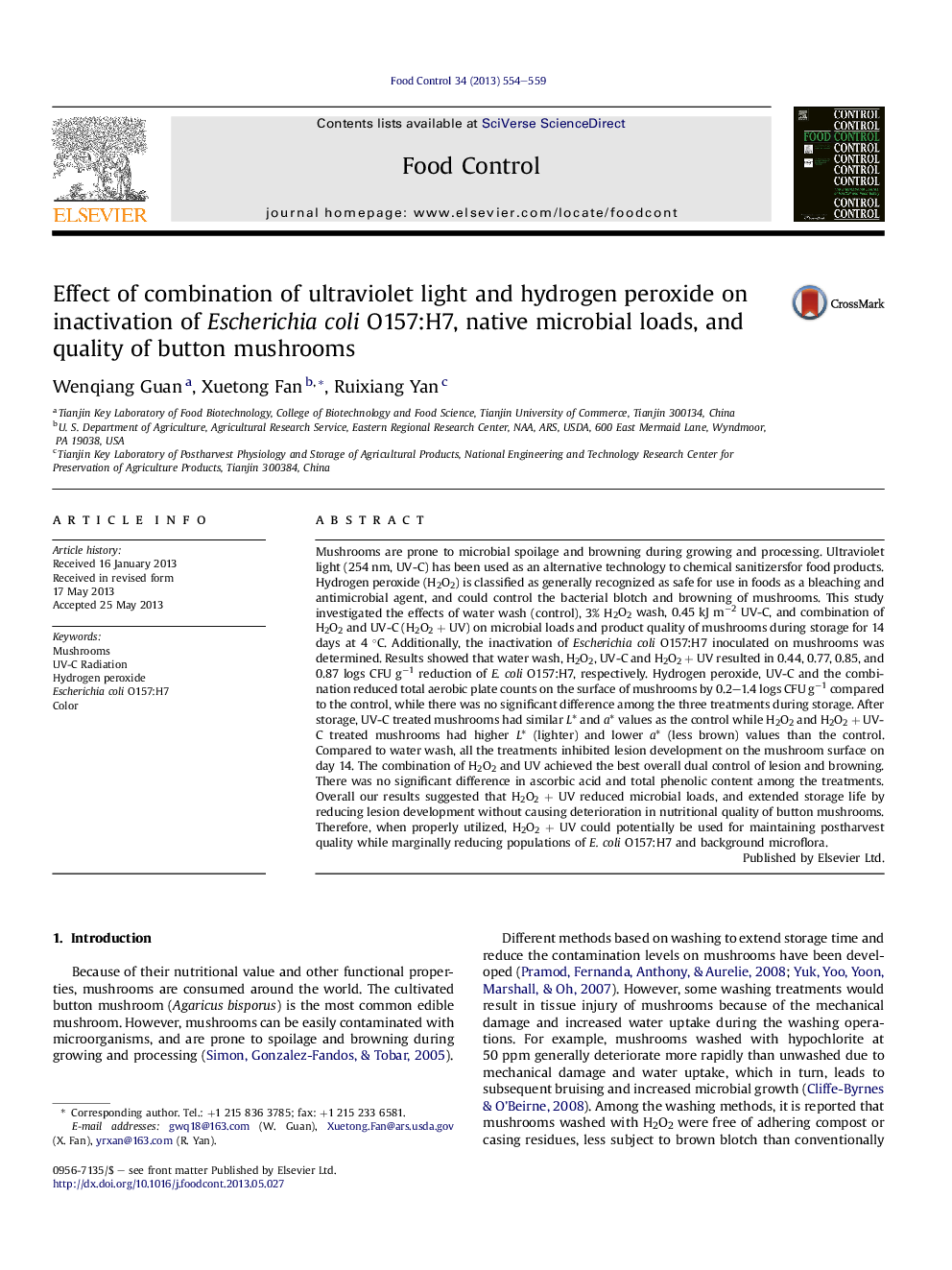| Article ID | Journal | Published Year | Pages | File Type |
|---|---|---|---|---|
| 6392365 | Food Control | 2013 | 6 Pages |
â¢H2O2, UV-C and H2O2 + UV could reduce E. coli O157:H7 and native microbial loads on mushroom.â¢Combination of H2O2 and UV-C is more effective than any single treatment in inhibiting lesion development.â¢Combination of H2O2 and UV-C can be used for button mushrooms during storage.
Mushrooms are prone to microbial spoilage and browning during growing and processing. Ultraviolet light (254 nm, UV-C) has been used as an alternative technology to chemical sanitizersfor food products. Hydrogen peroxide (H2O2) is classified as generally recognized as safe for use in foods as a bleaching and antimicrobial agent, and could control the bacterial blotch and browning of mushrooms. This study investigated the effects of water wash (control), 3% H2O2 wash, 0.45 kJ mâ2 UV-C, and combination of H2O2 and UV-C (H2O2 + UV) on microbial loads and product quality of mushrooms during storage for 14 days at 4 °C. Additionally, the inactivation of Escherichia coli O157:H7 inoculated on mushrooms was determined. Results showed that water wash, H2O2, UV-C and H2O2 + UV resulted in 0.44, 0.77, 0.85, and 0.87 logs CFU gâ1 reduction of E. coli O157:H7, respectively. Hydrogen peroxide, UV-C and the combination reduced total aerobic plate counts on the surface of mushrooms by 0.2-1.4 logs CFU gâ1 compared to the control, while there was no significant difference among the three treatments during storage. After storage, UV-C treated mushrooms had similar L* and a* values as the control while H2O2 and H2O2 + UV-C treated mushrooms had higher L* (lighter) and lower a* (less brown) values than the control. Compared to water wash, all the treatments inhibited lesion development on the mushroom surface on day 14. The combination of H2O2 and UV achieved the best overall dual control of lesion and browning. There was no significant difference in ascorbic acid and total phenolic content among the treatments. Overall our results suggested that H2O2 + UV reduced microbial loads, and extended storage life by reducing lesion development without causing deterioration in nutritional quality of button mushrooms. Therefore, when properly utilized, H2O2 + UV could potentially be used for maintaining postharvest quality while marginally reducing populations of E. coli O157:H7 and background microflora.
